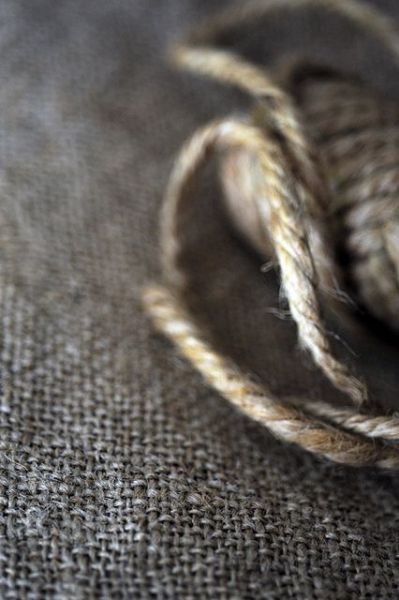Jute fabric presents a lot of benefits due to its wonderful property, pollution free environment and especially contributes to a sustainable development. This biodegradable material has a high moisture retention capacity and fire resistant properties too. It is usually used as geotextile.
1. Cleansing the Air
Studies have shown that 1 hectare of jute cultivation can absorb up to 15 tons of carbon dioxide and release 11 tons of oxygen during the jute growing process (about 100 days) a benefit for our environment and planet, for a green and sustainable development.
2. Reducing Environmental Pollution
Jute fabric is the best alternative to stop toxic wastes. Plastic bags are being substituted by jute bags, to prevent environment from pollution. Plastic bags have been effectively banned in India and in many other countries due to their harmful components.
 3. Lowers the Burden From Natural Oil Reserves
3. Lowers the Burden From Natural Oil Reserves
Plastic and poly bags are made from petroleum. Petroleum resources are depleting very fast, which results in an increase in petroleum price and inflation rate.
4. More Land Available for Food production.
Jute cultivation requires less acreage to grow. One hectare of field can produce much more jute fibre than one hectare of cotton cultivation. This acreage reduction allows more food crops and therefore reduces risk of food inflation.
5. Backward Rural Area situation is improved
Jute is mostly cultivated in the backward areas of India and Bangladesh near the coast of Bay of Bengal. The building of jute industries in these regions would increase employment and development of backward rural and remote areas, and consequently less migration to urban areas.
6. Pesticide, herbicide, fertilizer and acreage are highly reduced
Jute crop requires less fertilizer, herbicide and pesticide compared to cotton crop. Compared to cotton, Jute crop requires less acreage to produce the same amount of vegetable fibre.
7. Soil Condition, Texture and Fertility are improved
After a jute crop, leaves and roots of jute plants remain into the field, these have the property to make the soil and to improve its texture.
8. High Production Level compared to Cotton
Jute has high capacity production. Jute can be harvested every 4 or 6 months and can produce between 20 and 40 tonnes per hectare. Compared to cotton, the fastest growing trees take between 10 and 14 years to mature. In addition, trees only produce between 8 to 12 tons of cotton per hectare annually. This is why jute is the best and cheaper option.
9. Beneficial for the following Crops
When jute crop is rotated with other crops on the same field, the productivity of other crops are increased and the risk of diseases is reduced.During jute crops many nutrients are replenished in the field soil, making the field fertile to benefit the next crop. The rotation of jute with other crops contribute to increase the soil fertility.
10. Can Save Millions of Trees Worldwide
Every year hundreds of thousands of trees are cut for paper and furniture industries. If we opt for bags and furniture made of jute, we may save millions of trees. The increasing level of awareness about the environment and the benefits of jute, leads more and more people to select jute and make their lifestyle more green and eco-friendly. Not only using jute bags, but also using craft, decorative items, footwear, carpets, clothing, webbing, handcrafts... in jute. Geotextile and jute fabrics for construction are highly requested too.
11. Help to maintain Ecological Balance in the Nature
Trees are very important for our planet to maintain the earth’s environmental balance. Using jute products will save these trees and contribute to ecological balance on the planet. Tree protection may solve problems such soil erosion, floods, rainfall imbalance, soil fertility, global warming, climate changes, shrinking wildlife habitats, etc.
For all these reasons we can say that jute is the most eco-friendly natural fibre that exists. Unknown to many and a great ally to others.
And you, do you think about our planet?